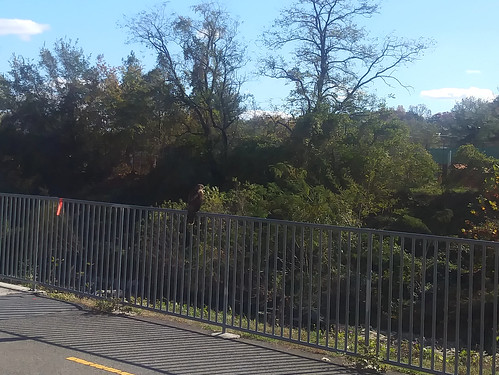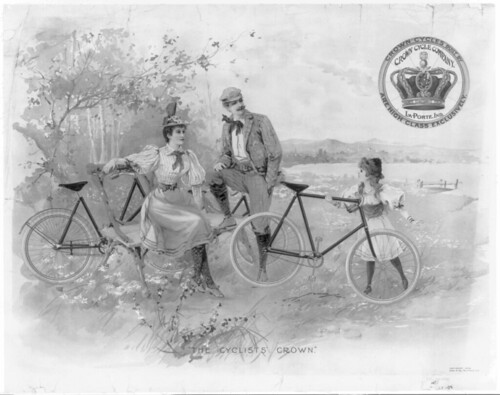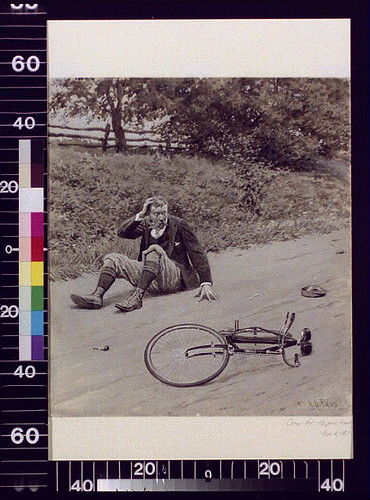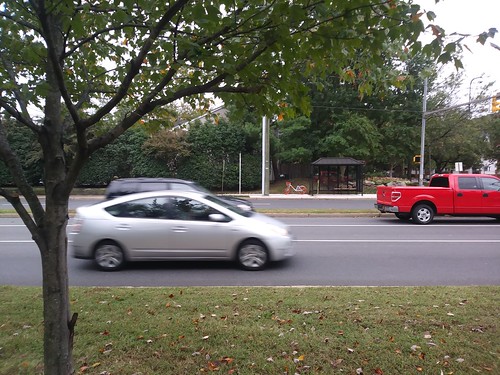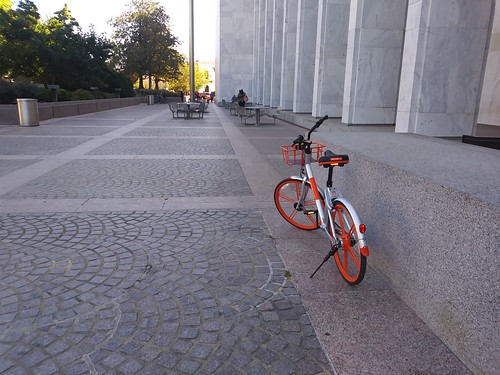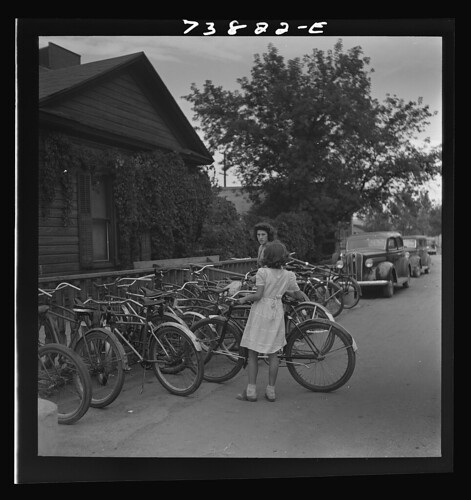
Farm Security Administration/Office of War Information photo of women and bicycles in 1942
Title-Pocatello, Idaho. Bicycle racks
Contributor Names-Lee, Russell, 1903-1986, photographer
Created / Published-1942 July.
Subject Headings
- United States--Idaho--Bannock County--Pocatello.
- Idaho--Bannock County--Pocatello
Format Headings-Nitrate negatives.
Notes
- Title and other information from caption card.
- Transfer; United States. Office of War Information. Overseas Picture Division. Washington Division; 1944.
- More information about the FSA/OWI Collection is available at http://hdl.loc.gov/loc.pnp/pp.fsaowi
- Film copy on SIS roll 16, frame 296.
Medium-1 negative : nitrate ; 2 1/4 x 2 1/4 inches or smaller.
Call Number/Physical Location-LC-USF34- 073822-E [P&P]
Source Collection-Farm Security Administration - Office of War Information Photograph Collection (Library of Congress)
Repository-Library of Congress Prints & Photographs Division Washington, DC 20540 http://hdl.loc.gov/loc.pnp/pp.print
Digital Id-fsa 8c32556 //hdl.loc.gov/loc.pnp/fsa.8c32556
Control Number-fsa2000050764/PP
Reproduction Number-LC-USF34-073822-E (b&w film nitrate neg.) LC-DIG-fsa-8c32556 (digital file from original neg.)
Rights Advisory-No known restrictions. For information, see U.S. Farm Security Administration/Office of War Information Black & White Photographs http://www.loc.gov/rr/print/res/071_fsab.html
Online Format-image
Description-1 negative : nitrate ; 2 1/4 x 2 1/4 inches or smaller.
This comes from a large collection of materials best known for the "Migrant Mother" photograph by Dorothea Lange, taken in 1936. Here is general information about this collection. There are about 100 other depression-era and World War II era photographs in this collection.
In most of these photos from the 30s and 40s, the bikes are not particularly interesting, reflecting I think the poor status of bicycles as a means of transportation at the time. In most of these photos the bicycles are being ridden by adults for whom a bicycle was a poor second to motorized transportation (that is, a car). The main focus of bicycle marketing at the time, such as it was, was on children, although during WWII that was not active to save on the materials required.
